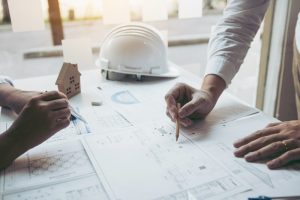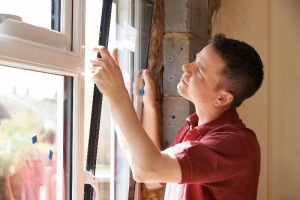Planning your home’s electric system is a complex process that needs you to be careful. It’s crucial to plan the installations according to your needs and expectations in anticipation of your stay. Knowing what to do from the beginning prevents unforeseen circumstances such as circuit overloading with multiple high performances and increased connector strips.

It would help if you kept close attention to doors and open directions, fireplaces, staircases, windows, and steps. This is carried out based on a floor plan by making it as accurate as possible, and you can use a computer with software that corresponds to the plan.
Planning Your Kitchen Area
The kitchen is often the first room to plan for your electric system. It’s because of the many features involved, which consume more time as compared to other places. Put up lighting and install connections for extractor fans or freezer, microwave, refrigerator, and ovens.
The planning needs to be in a dimensional manner for easy implementation. Don’t forget to connect other utensils such as blenders, steamers, coffee machines, and toasters. If need be, you can also install a telephone in your kitchen.
Planning Bedrooms
Begin by putting lighting around your bed. Designing luminaries as wall lights will save you a lot of space. Also, consider installing more electrical outlets around the bed that you can use to charge the telephone. When done, move to the children’s rooms.
Remember that children grow very first, and you need to plan well to accommodate all their needs as they grow. For instance, you can get a heat lamp for a toddler, a desk lamp, and a computer with essential connections for the little ones.
Planning the Living Room
Pay close attention when installing an electrical system in the living room. Put in mind the sections for TV and telephone by installing the sockets in the appropriate position. Once you determine where to place the devices, look for the right place to install the internet, antenna, and loudspeaker. Be careful not to leave loose cables down the line.
Bathroom Planning
Today, most homeowners are turning their bathrooms into places of rest, more like a spa. This means the electrical installation required for the bathroom has also changed. Initially, you only needed hairdryers, a ceiling lamp, and sockets for shavers. However, things have changed, and you need to get a lot of appliances such as steam dryers, heated toilet seats, shower radios, and electric toothbrushes.
Therefore, ensure you have an adequate number of sockets to accommodate all the appliances. To avoid any issues, you can check the bathroom connection regulations to ensure you’re doing the right thing.
Smart Home System
Due to advanced technology, many homes today have more components that need proper electrical planning. They include motion detectors with cameras, light, and dimmer control systems, electric blinds, multi-room audio systems, and door-to-door communication systems. You can wire these systems by flexibly integrating them as a plugin solution so that you can move along with them as you shift to another home.
The Bottom Line
How you plan your home electrical system determines how well you do it. It looks complicated, but it becomes easier once you master the art of doing it step-by-step. Following the plan above will help you carry out your installation effectively while also observing safety measures to keep your household safe from harm. It’s always a good idea to consult with an electrician in your area.
ATR031824
…
 Some of the above techniques work in conjunction with the proper orientation of windows to make sure the right things are getting maximum sunlight in winter and minimum in summer. Choice of windows and window positioning thus plays an important role in passive solar design with regards to managing temperature. Secondarily, proper positioning of windows can provide natural sunlight throughout the day thereby minimizing the need for artificial lighting sources. Be sure to consult with a remodeling contractor that specializes in energy efficiency.
Some of the above techniques work in conjunction with the proper orientation of windows to make sure the right things are getting maximum sunlight in winter and minimum in summer. Choice of windows and window positioning thus plays an important role in passive solar design with regards to managing temperature. Secondarily, proper positioning of windows can provide natural sunlight throughout the day thereby minimizing the need for artificial lighting sources. Be sure to consult with a remodeling contractor that specializes in energy efficiency.